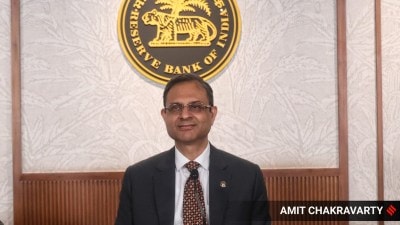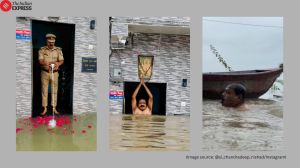‘Planning for huge crowds should become routine, traditional methods ineffective’: Haryana IPS officer O P Singh after Bengaluru stampede
Bengaluru stampede: Senior Haryana IPS officer O P Singh proposes a national framework for crowd management that includes flexible planning protocols, joint operations centers for multi-agency coordination, and better integration of technology.
 O P Singh is the head of the Haryana State Narcotics Control Bureau (HSNCB). (Express Photo)
O P Singh is the head of the Haryana State Narcotics Control Bureau (HSNCB). (Express Photo)Traditional methods, such as barricades and baton units, are becoming increasingly ineffective in controlling crowds, according to senior Haryana IPS officer O P Singh, who is the head of the Haryana State Narcotics Control Bureau (HSNCB).
Singh, a 1992-batch IPS officer who has over three decades of experience in public service, including extensive field experience in various roles and an understanding of public order and crowd dynamics, was speaking to The Indian Express in the wake of the Bengaluru Chhinaswamy Stadium stampede in which 11 people were killed. He underscored the “criticial need for a more systemic and proactive approach to crowd management”.
Excerpts from an interview.
Q. India’s large gatherings are famous but recent tragedies underscore a critical challenge: managing these crowds safely. What’s the core issue, in your view?
O P Singh: The fundamental problem is a lack of systemic planning. We often react to incidents rather than proactively designing for them. Crowd management is currently treated as an ad hoc issue for law enforcement rather than an integrated part of urban planning and disaster management. We need to shift from reactive “event policing” to a comprehensive “systems thinking” approach.
Q. Crowds are changing, and why are traditional policing methods struggling?
O P Singh: Crowds are now often spontaneous, mobilising in minutes via social media, often in spaces not designed for them. They are less hierarchical and more mobile. Traditional methods, such as barricades or baton units, are increasingly inefficient. Our officers are experienced but often under-resourced for this new reality. The solution is not just better policing; it is better governance.
Q. So, what would a national framework for crowd management entail?
O P Singh: We need a National Framework for crowd management: a flexible, tiered system of planning protocols based on crowd size, event type, and infrastructure. This would formalise practices that are currently discretionary, like risk assessments, exit planning, inter-agency coordination, and clear deployment checklists. Crowd safety must be integrated into disaster management and urban planning policies.
Q. How can joint operation centres improve efficiency at the district level?
O P Singh: Joint operations centres (JOCs) would be multi-agency units coordinating planning and response. Imagine police, health services, fire departments, transport, and municipal bodies all working from a shared playbook with clear lines of command. This would vastly improve communication and resource allocation during critical events.
Q. How can technology be better leveraged for crowd control in India?
O P Singh: Many cities have CCTV and drones. We need to integrate these with crowd-modelling software and AI-based density tracking for real-time alerts and preemptive responses. AI heatmaps can guide dispersal and identify pressure points before they become dangerous. The Ministry of Home Affairs could fund state-level pilot projects, fostering partnerships with Indian research institutions and tech firms for tailored solutions.
Q. Beyond tech, what about infrastructure’s role in preventing crowd incidents?
O P Singh: Infrastructure is crucial for crowd flow. Our urban spaces often lack adequate signage, multiple exits, or directional guidance. Cities should be encouraged to incorporate crowd-conscious design into their regular upgrades. For recurring high-density events, temporary modular infrastructure, including barricades, elevated walkways, digital signage, and mobile medical units, can be deployed. This requires forethought, not major capital expenditure.
Q. How can the nation build institutional memory and ensure accountability in crowd management?
O P Singh: A national repository of after-action reports, maintained by the Bureau of Police Research and Development, would allow officers to learn from experiences across states, building shared institutional memory. Accountability must also evolve. Crowd safety should not just depend on field execution; administrative planning by municipal corporations and event organisers should be evaluated in post-event reviews. This shared responsibility will encourage greater diligence.
Q. What are your thoughts on India’s potential here?
O P Singh: India’s scale makes perfect crowd control impossible, but it makes strategic preparedness non-negotiable. Well-managed gatherings showcase administrative coordination and build civic trust. We have the talent, tools, and institutional base. What is needed is alignment between policy and practice, Centre and states, and agencies on the ground. Planning for huge crowds, such as during elections, should be routine. In a country where people will always gather, the future of public safety lies not in control but in design.












